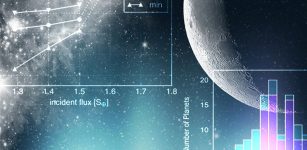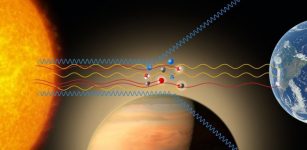Three New, Nearby Planetary Systems – Discovered
Eddie Gonzales Jr. – MessageToEagle.com – Three new nearby planetary systems have been discovered by astronomers from the Open University, UK, using HARPS (the High Accuracy Radial Velocity Planet Searcher a high-precision planet-finding spectrograph, on the European Southern Observatory’s 3.6m telescope at La Silla in Chile.
“These new discoveries are very promising for further studies. They should allow us to measure the relationships between the mass, size, and composition of planets outside our own Solar System,” Professor Carole Haswell, Head of Astronomy at The Open University, said in a press release.
“We can now see how planets, in general, are built, and whether our own planet is typical. For example, we don’t yet know if it is a coincidence that in the Solar System, the Earth and Venus are the biggest rocky objects and have the largest fraction of their mass made of iron.”
The team of researchers studied stars known as DMPP–1, DMPP–2 and DMPP–3, and the discovered planets are DMPP-1b, DMPP-1c, DMPP-1d, DMPP-1e, DMPP-2b, and DMPP-3Ab. These bodies are very close to their stars and are heated to temperatures of 1100oC – 1800oC. At these temperatures, the temperatures, the atmosphere and the surface of the planet can be lost, and some of this material disperses to form a thin shroud of gas.
DMPP–1 has three hot super-Earth planets with masses between three and 10 times that of Earth, each orbiting the star every few days. It also has a warm Neptune-mass planet which orbits the star every 20 days. DMPP–1 hosts a really important planetary system with three low mass exoplanets whose composition we can measure.
DMPP–2b is a giant planet with a mass almost half that of Jupiter in a five-day orbit. It had been overlooked in previous studies because the star pulsates, which obscures the signature of the gravitational pull of the orbiting planet.
Commenting on DMPP-3, Dr. John Barnes, a Research Fellow at The Open University, said: “DMPP-3 was a huge surprise, we were looking for a tiny signal indicating an orbiting, low mass planet, but the first thing we found was a huge signal due to a companion star we hadn’t expected.”
Written by Eddie Gonzales Jr. – MessageToEagle.com Staff











